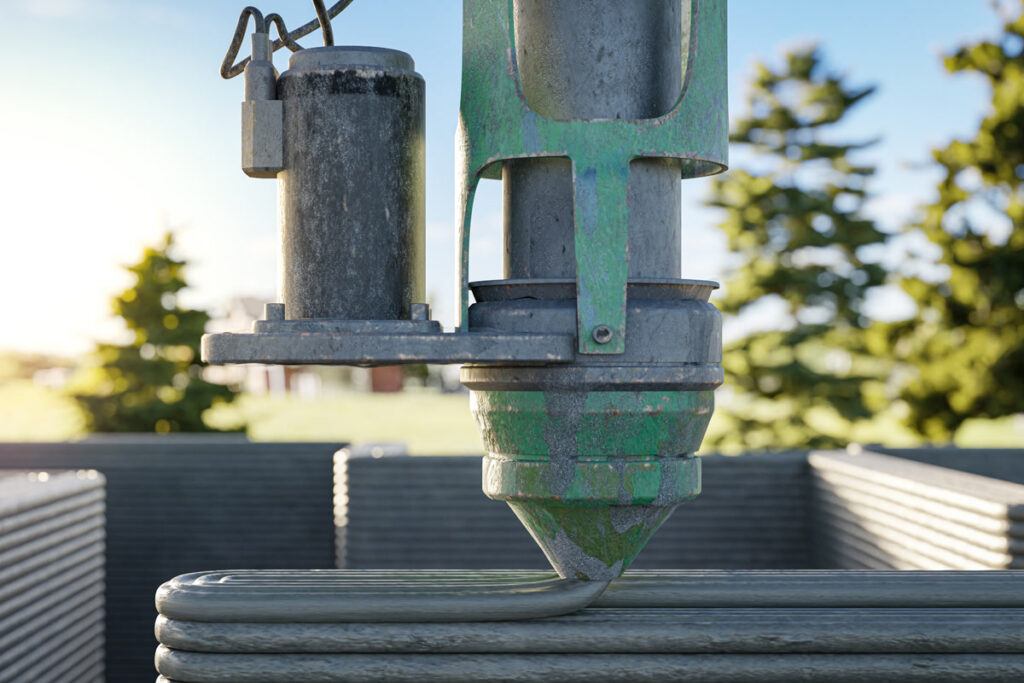AC3D Revolutionizes Construction in Dubai with 3D Printing Technology
US-based 3D construction printing company AC3D has officially launched its operations in the UAE, with a commitment to transform construction practices in Dubai by making them greener, more cost-effective, and efficient. This development aligns with the Dubai 3D Printing Strategy 2030, aiming to achieve 25 percent implementation of 3D-printed buildings across the Emirates by 2030. AC3D’s innovative approach promises to revolutionize not only the construction industry but also sustainability efforts and humanitarian concerns.
AC3D’s Vision for Greener Construction
Low-Rise Housing, Commercial Real Estate, and Infrastructure Focus
AC3D is concentrating its efforts on low-rise housing, commercial real estate, and infrastructure projects. By doing so, it is ushering in a more environmentally friendly era of construction in Dubai.
Cost-Effective and Less Labor-Intensive
The company envisions making construction up to 1.5 times more cost-effective while significantly reducing the reliance on manual labor. This not only boosts efficiency but also addresses labor shortages in the construction sector.
Accelerated Construction
Under the Dubai 3D Printing Strategy 2030 and Dubai Municipality, AC3D aims to expedite construction processes, achieving up to a fourfold increase in construction speed. This remarkable acceleration will be achieved while using sustainable printing materials.

The Expanding 3D Construction Printing Market
Robust Growth
The global 3D construction printing market is on an upward trajectory, expected to reach $2.5 billion in 2025, up from $500 million in 2023. Dubai’s commitment to 3D printing aligns with this burgeoning market.
Dubai’s Ambitious Goals
Dubai’s 3D Printing Strategy 2030 sets a goal of having 25 percent of its buildings 3D-printed by 2030, reflecting the city’s determination to embrace cutting-edge construction technologies.
Addressing Sustainability Challenges
Environmental Impact of Traditional Construction
The construction industry is a major contributor to environmental challenges, being the world’s leading waste producer and a significant source of global carbon emissions. Cement production alone is responsible for 10 percent of CO2 emissions.
Sustainable Printing Materials
AC3D is addressing these concerns by using sustainable 3D printing materials, including a 100 percent cementless geopolymer that significantly reduces the carbon footprint associated with construction.

Humanitarian Implications
Global Housing Shortage
AC3D’s technology has profound humanitarian implications. With a single 3D printer capable of building more than 50 houses per year, it offers a viable solution to the global housing shortage. The World Bank predicts that this shortage will impact 1.6 billion people by 2025.
Labor Shortfall
Additionally, the construction industry faces a severe shortfall of 10 million construction workers, compounding the housing deficit. AC3D’s technology helps bridge this gap by offering a more automated and efficient construction process.

Regulatory Support in Dubai
Progressive Regulations
Dubai has been proactive in embracing 3D printing technology in construction. Regulatory milestones, such as Decree No. (24) issued by His Highness Sheikh Mohammed bin Rashid Al Maktoum, have paved the way for the responsible application of 3D printing technology in construction.
First Construction License for a Private Villa
In July 2023, Dubai Municipality granted the first construction license for a private villa using 3D printing technology, highlighting the city’s commitment to innovation in construction.
AC3D’s entry into the UAE’s construction landscape marks a significant step toward greener, more cost-effective, and efficient construction practices in Dubai. With sustainability at its core, AC3D’s technology addresses not only environmental concerns but also humanitarian challenges related to housing shortages and labor deficits. As Dubai continues to embrace 3D printing in construction, it positions itself as a global leader in innovative and sustainable building practices, setting a precedent for cities worldwide.
